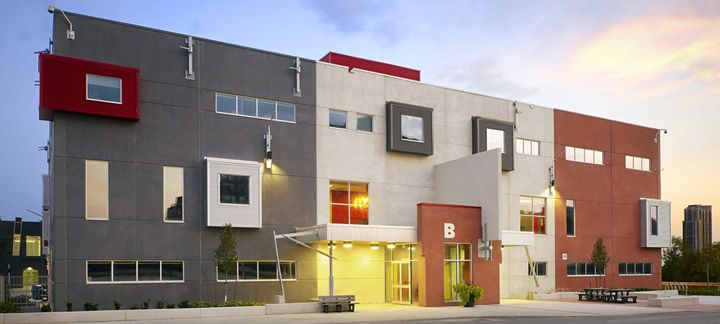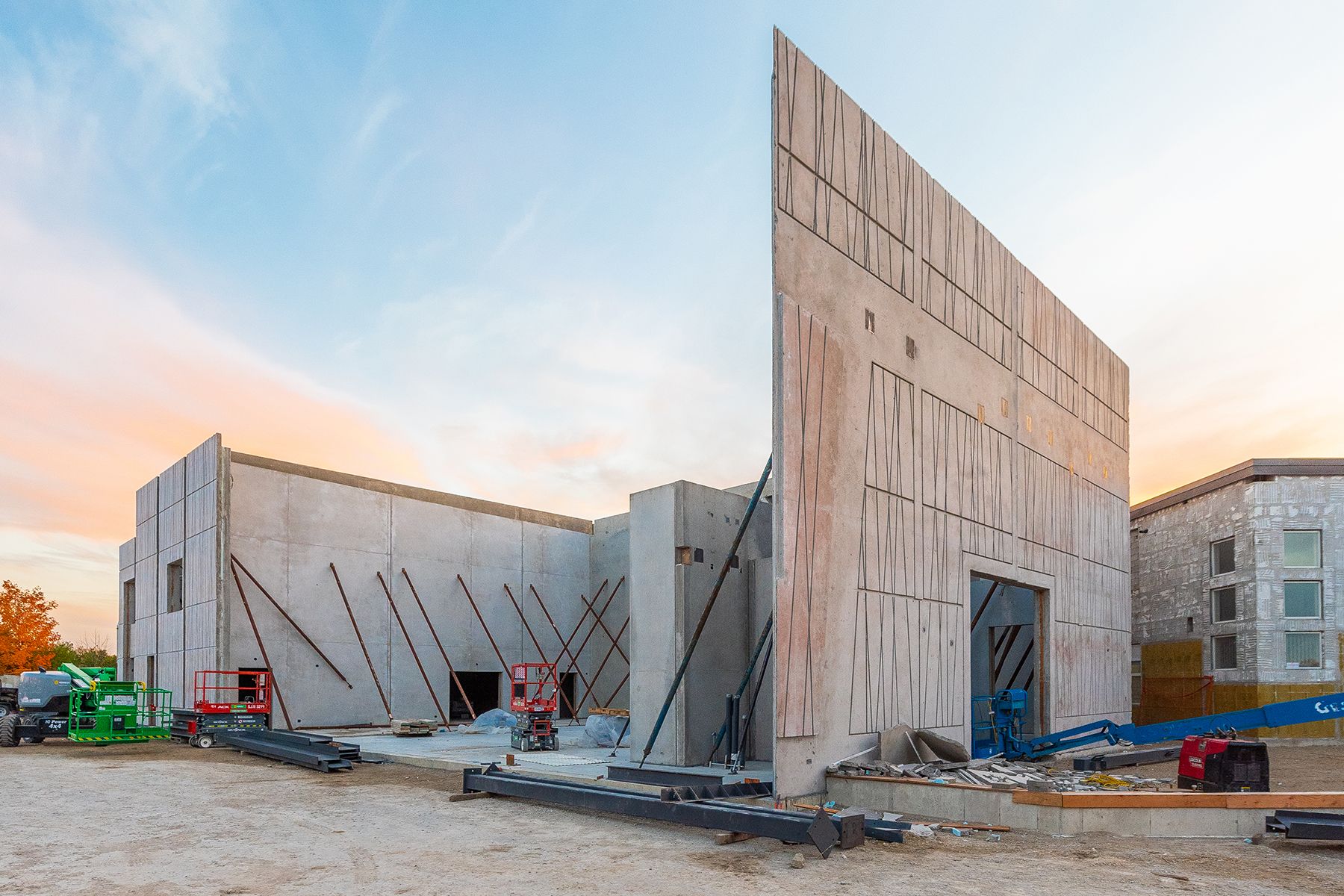Building Systems Compared: Masonry vs. Tilt-Up Construction

When it comes to two trusted construction methods, which is right for your project?
There are many options when it comes to building a structure – masonry and tilt-up construction are two of the most common. Masonry is quite popular, and it has been around for centuries, dating all the way back to the 4th millennium. Tilt-up has been around for more than 100 years and is growing in popularity each year. When comparing tilt-up vs. masonry, which one is right for your project?
The difference between masonry and tilt-up construction
Masonry is a tried and true construction method with a long history and a strong reputation. It involves building structures by laying individual masonry units and binding them together with cement mortar. The individual masonry units can be brick, concrete block, stone, or other similar materials.
In contrast, tilt-up construction is a less labour-intensive method that involves forming and pouring concrete panels on-site, and then using a crane to lift them into place.
Both can result in beautiful buildings, each with their respective value and advantages, but they involve very different approaches.
Pros and cons of masonry
There are many benefits to using masonry for a construction project. First, it can be very cost-effective. Masonry units have a naturally appealing look without applying external finishes, so once they’re installed, no further work is needed. This can lead to significant savings since additional materials aren’t needed, and special trades that apply finishes aren’t necessary.
Masonry is non-combustible and improves the safety of a building. This is why fireplaces are often built with masonry units. Additionally, masonry is highly resistant to pests and bad weather.
Masonry is also an effective way to give a home or building a dynamic, rustic look.
However, masonry has its downsides, too. Masonry construction has to be postponed during heavy rains or freezing temperatures, as the cement mortar is vulnerable to these conditions. Masonry also performs poorly during some natural disasters, such as earthquakes. During construction, a lot of specialized manpower is required, and masonry can add a lot of time to a project schedule. Furthermore, masonry units are quite heavy and require a lot of transportation around the job site. This means a lot of manual labour to get materials to the right place, and this excessive movement can increase carbon emissions for the project.
Pros and cons of tilt-up
Tilt-up construction has a lot of positives. Tilt-up buildings can be erected on tight time schedules. Shorter project timeframes result in lower overall costs. In addition, tilt-up follows a simplified construction process and doesn’t require a lot of specialty trades. This, too, results in cost savings.
Tilt-up buildings are extremely durable and can withstand the impact of many weather events and natural disasters.
These buildings have thermal mass, which makes it easier to maintain the internal temperature. This results in lower energy costs over time.
The concrete in tilt-up buildings naturally absorbs sound, which reduces noise pollution and makes the space more enjoyable for inhabitants. From a design standpoint, the tilt-up process allows for more spacious buildings without using perimeter columns. And construction of tilt-up buildings is safer than construction processes with other materials like wood.
The cons of using tilt-up are few and far in-between, but they exist. Tilt-up construction may require higher upfront costs; however, these are offset by the building’s energy savings and longevity. Also, construction on tilt-up buildings can be difficult on smaller sites, but with the right equipment and an experienced team, there are plenty of workarounds.

Choosing between tilt-up and masonry construction
When considering tilt-up vs. masonry, your decision ultimately depends on the factors that are most important. Your project timeframe, your budget, and your design preferences should all be taken into consideration. For example, masonry may not be the right fit for a project that needs to be completed in just a few months during the winter – it requires more time and skilled labour, and it can’t be done in cold weather.
You should also consider the purpose of your building and where you live. Tilt-up construction is versatile and works well for large projects, like warehouses and schools, as well as smaller custom homes. And, if you live in an area that’s prone to natural disasters, a tilt-up building will be easier to maintain.
Tilt-up is the best choice
Ultimately, tilt-up construction is the ideal choice. It has unmatched durability, cost-effectiveness, energy efficiency, and architectural versatility. And, if you want the aesthetic appeal of masonry, this can be achieved with form liners (e.g. thin brick, thin block, etc.). Tilt-up can give you the look you want with less construction time and less labour.
To incorporate tilt-up into your next project, contact Tilt Wall today.
